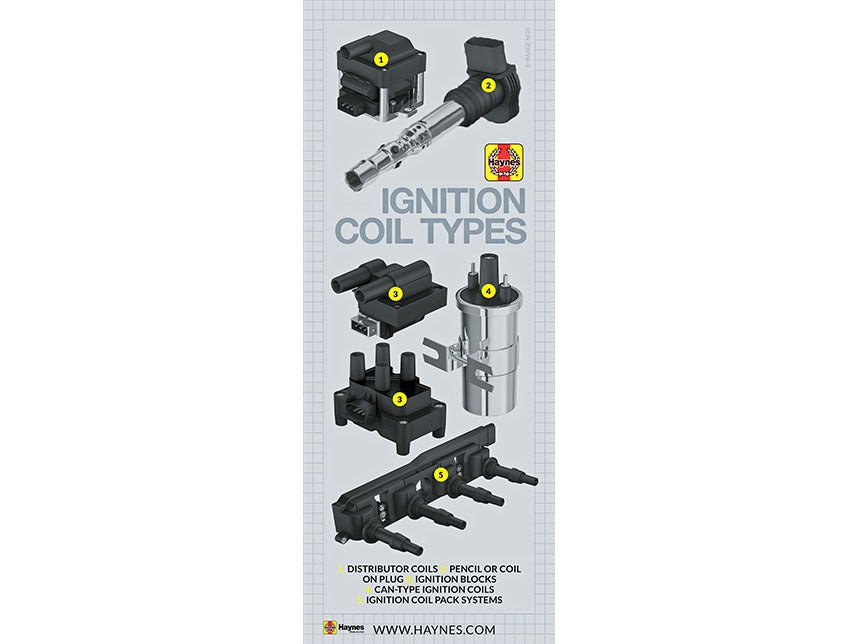If you’ve ever experienced your car struggling to start, running roughly, misfiring, or suddenly becoming less fuel-efficient, the culprit might be a failing coil pack. These components are essential for your engine’s ignition system, and understanding their role can save you from potential headaches and costly repairs down the line.
What is a Car Ignition Coil Pack?
At its core, a car ignition coil pack is a vital part of your vehicle’s ignition system. Its primary job is to take the low 12-volt electrical current from your car’s battery and dramatically increase it. We’re talking about boosting it to an incredibly high voltage, often up to 45,000 volts! This high-voltage electrical energy is then directed to the spark plugs. Think of the coil pack as a transformer, stepping up the voltage to the level needed to ignite the air-fuel mixture within your engine’s cylinders.
To understand it simply, an ignition coil is essentially a wire-wound transformer encased in insulation. It takes the initial low-tension current from the battery and converts it into high-tension current necessary for the spark plugs to function.
Why is a Coil Pack Necessary for Your Engine?
Without a functioning coil pack, your engine simply wouldn’t run. Spark plugs need a very high voltage to create a spark strong enough to ignite the air and fuel mixture inside the engine’s combustion chamber. The pressure within these cylinders is immense, demanding a powerful spark for effective combustion.
When a coil pack starts to degrade, it might not consistently deliver the required high voltage. This can lead to a misfire – a situation where the spark plug fails to ignite the fuel-air mixture in one or more cylinders. A misfire can occur intermittently, especially under certain engine conditions or loads, indicating a coil pack that’s on its way out.
What Does a Car Coil Pack Look Like?
The appearance and location of your car’s coil pack can vary depending on the age and design of your vehicle.
In older vehicles, especially those with a traditional distributor-based ignition system, a coil pack often resembles a small metal cylinder, sometimes referred to as a “canister-type coil.” You’ll typically see wires connected to it – one from the battery and another leading to the distributor. Some older systems, like the General Motors High Energy Ignition (HEI) distributor, integrated the coil directly into the distributor cap.
Modern cars, however, usually employ more efficient and direct ignition systems. Coil packs are often mounted directly on top of each spark plug. This “coil-on-plug” design minimizes the distance the high voltage needs to travel. Other modern setups might use boxy coil packs mounted on the fender, firewall, or engine itself, with shorter wires connecting them to the spark plugs. Some manufacturers also use coil packs constructed in series, known as cassette coils, sequence coils, or coil rails. In these systems, the engine control unit (ECU) precisely controls the firing of each coil to ignite the spark plugs at the optimal moment.
 A simple guide to your car
A simple guide to your car
Where is the Coil Pack Located in Your Car?
The location of the coil pack is closely related to the type of ignition system your car uses.
In older vehicles with distributors, the coil pack is commonly found mounted on the firewall or somewhere on the engine, near the distributor. The distributor’s role is to “distribute” the high voltage from the coil to each spark plug in the correct firing order via thick spark plug wires.
In contrast, modern cars equipped with electronic ignition systems rely on a computer, rather than a distributor, to manage spark plug firing. In these vehicles, you’ll most likely find the coil pack mounted directly onto or very near the spark plug. This eliminates the need for long, high-voltage spark plug wires in many cases. This advancement allows modern engines to utilize multiple individual coil packs, often one for each cylinder, leading to more precise and efficient ignition.
How Does a Car Coil Pack Function?
The magic behind a coil pack’s operation lies in the principles of a step-up transformer. Inside the insulated body of the coil pack, there are two sets of wire coils wrapped around a central core. These are the primary and secondary windings.
The primary winding receives the low-voltage current from the car battery. This current flow creates a magnetic field around the primary coil. Crucially, the ignition system or ECU then momentarily interrupts this current flow. When this interruption occurs, the magnetic field collapses rapidly. This collapse induces a significantly higher voltage in the secondary winding, which has thousands more windings than the primary. This high-voltage surge is then sent to the spark plug, generating the spark needed for combustion.
For a more in-depth understanding of transformers, you can refer to resources like the Wikipedia article on transformers.
Why Do Car Coil Packs Fail?
Coil packs operate in a harsh environment under the hood of your car. They are constantly exposed to heat and vibration from the engine, which are major contributors to their eventual failure.
- Heat: The intense heat within the engine bay can degrade the coil pack’s internal windings and insulation over time. This breakdown of insulation can cause short circuits within the windings, limiting the coil’s ability to step up voltage effectively.
- Vibration: Constant engine vibration can also physically damage the delicate internal components of the coil pack, contributing to wear and tear.
- Cracked Insulation: The insulated case of a coil pack can develop cracks due to thermal stress and age. These cracks allow moisture to penetrate the coil, leading to intermittent short circuits and rough engine running, especially in damp conditions.
- Overload: Worn spark plugs with excessive electrode gaps or damaged spark plug wires can place extra strain on the coil pack. As the required voltage to jump the gap increases due to wear or damage, the coil can overheat and eventually short circuit due to the increased electrical stress.
How to Diagnose a Faulty Car Coil Pack?
A failing coil pack can manifest in several noticeable symptoms:
- Engine Misfires: This is a common sign. You might feel a jerky or uneven engine performance, especially during acceleration.
- Engine Backfires: Unburnt fuel in the exhaust system can ignite, causing loud backfires.
- Difficulty Starting: A weak spark can make it harder to start your engine, especially in cold weather.
- Reduced Engine Power: Misfires and incomplete combustion lead to a noticeable decrease in engine power and performance.
- Decreased Fuel Efficiency (Increased Thirst for Gas): Inefficient combustion wastes fuel, leading to lower miles per gallon.
- Smell of Unburnt Fuel: Misfires can result in unburnt fuel entering the exhaust system, which you might be able to smell.
If your car exhibits misfires particularly in damp weather, first thing in the morning, or in extreme temperatures, a marginal coil pack is a prime suspect.
Most cars manufactured after 1996 are equipped with an OBD II (On-Board Diagnostics II) system that includes misfire detection. If a repeated misfire occurs, the “check engine light” will illuminate. You can use an OBD II diagnostic scanner to retrieve trouble codes. A code like P030X, where X is the cylinder number, often indicates a misfire in a specific cylinder.
However, it’s important to remember that a misfire can be caused by various ignition and fuel delivery issues, not solely a faulty coil pack. Therefore, a thorough diagnosis should include:
- Spark Plug Inspection: Remove and examine the spark plug for wear, damage, or fouling.
- Spark Plug Wire Check (if applicable): Inspect spark plug wires for damage, cracks, or loose connections.
- Coil Pack Visual Inspection: Carefully check the coil pack for external cracks, damage, or signs of leaks.
A useful diagnostic technique for cars with multiple coil packs is to swap the coil pack from the suspected misfiring cylinder with a known good coil pack from another cylinder. If the misfire code then shifts to the cylinder where you moved the suspect coil, it confirms that the coil pack is indeed faulty.
What to Do if You Have a Bad Coil Pack?
The good news for DIY enthusiasts is that replacing coil packs is generally a straightforward process. Once you’ve located the coil packs (usually easily accessible after removing the engine cover), you’ll typically find each coil pack secured with a single screw or small bolt.
To replace a coil pack:
- Remove the securing bolt or screw.
- Gently pull the coil pack upwards. It should pop off the spark plug.
- Disconnect the electrical connector.
- Install the new coil pack, ensuring it’s properly seated on the spark plug.
- Reconnect the electrical connector.
- Reinstall the securing bolt or screw.
Unfortunately, there is no effective way to repair a defective coil pack. Replacement is the only reliable solution. However, catching a coil pack issue early and replacing it promptly can prevent more serious problems, such as damage to the catalytic converter, which can be a much more expensive repair.

